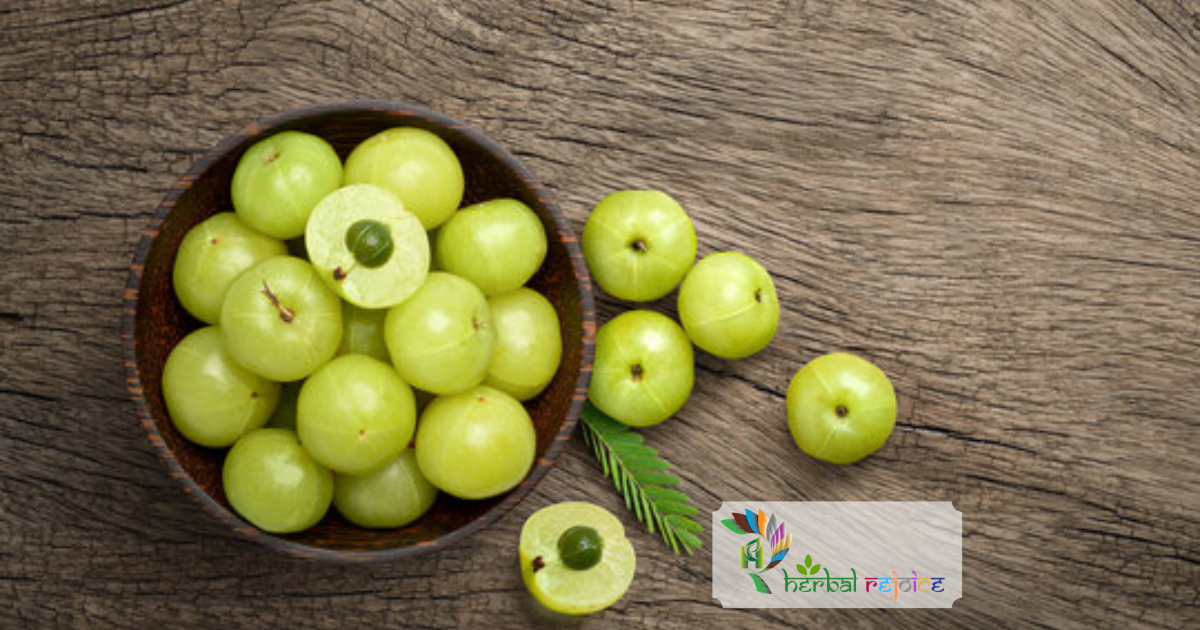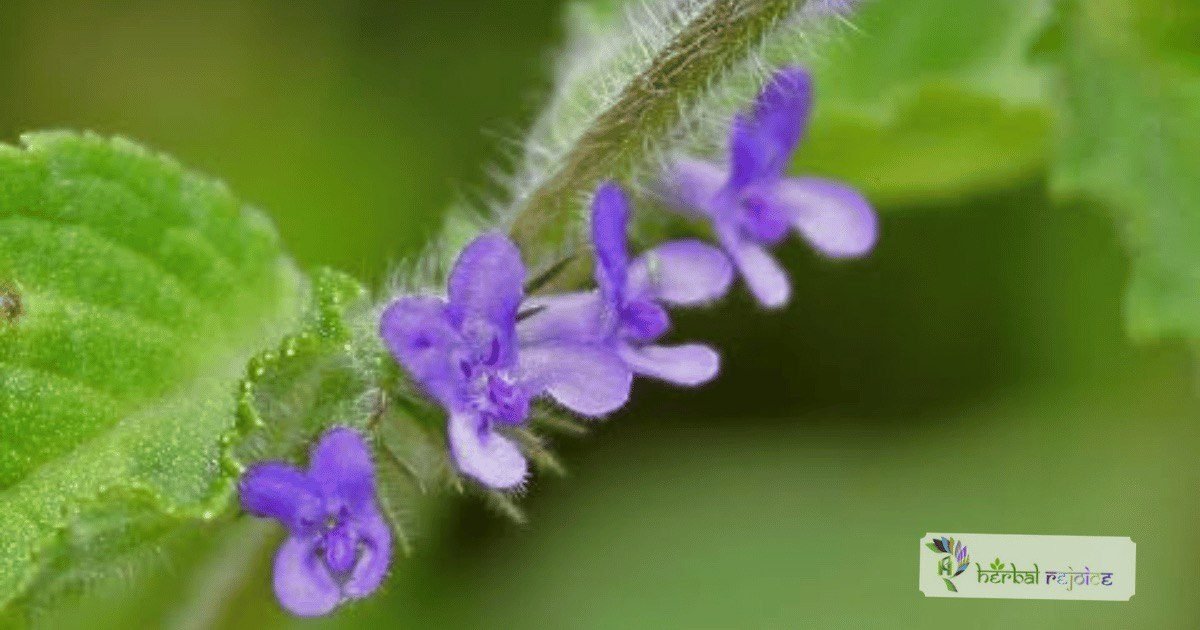Discover about Amla-Benefits – Immune treasure trove for healthy living
About Amla-Benefits – Immune treasure trove – Amalaki also known as Indian Gooseberry or Emblica officinalis, a small yet powerful fruit that holds the key to rejuvenation and well-being. Nature’s Rejuvenator! Embrace the antioxidant-rich fruit for enhanced heart health, digestion, and ageing. Herbal Rejoice welcomes you!
About Amla-Benefits – Immune treasure trove – Nature’s Gift
Amla is a versatile fruit that hails from the deciduous forests of India. But its popularity extends far beyond the Indian subcontinent – you can find it in Sri Lanka, Myanmar, and even regions of the Middle East. The tree’s characteristic greenish-grey with smooth bark makes it easy to spot.
Macroscopic Marvels – Amla’s Appearance
The appearance of Amla is truly fascinating. Starting with a striking green colour, it transforms into a light yellow or brick red as it matures. As for its size, an average Amla ranges between 1.5 and 2.5 cm in diameter, making it compact and convenient. The fruits themselves are depressed and globular, with fleshy, obscurely 4-lobed exteriors, concealing six trigonous seeds that are hard and smooth to the touch.
The Chemical Constituents of Amla
Amla is a nutritional powerhouse, boasting high levels of vitamin C (Ascorbic acid). It outshines even orange juice with a whopping 600-750 mg of vitamin C per 100 g of fresh pulp! Additionally, Amla fruits contain around 0.5 per cent fat, phyllemblin, and 5 per cent tannin. But that’s not all – they are also rich in essential minerals like phosphorus, iron, calcium, and a significant amount of pectin. Tannins play a crucial role in preserving the vitamin C content by preventing oxidation.
About Amla-Benefits – Immune treasure trove – Beyond Medicine and More
Amla’s versatility knows no bounds when it comes to its applications. In Indian medicine, it serves as an acrid, diuretic, refrigerant, and laxative.
When combined with iron compounds, the dried fruits come in handy for treating diarrhoea, dysentery, jaundice, dyspepsia, and anaemia. But its utility doesn’t stop there – Amla plays a role in preparing inks, hair oils, and shampoos.
Notably, the fixed oil derived from the fruits promotes hair growth, making it a sought-after ingredient in hair care products.
Amla and the Elixir of Youth – The Antioxidant Connection
Amla’s reputation as an antioxidant superstar makes it a natural choice for those seeking to slow the ageing process. Age-related damage caused by oxygen free radicals accumulates over time, resulting in various cellular and tissue issues.
Amla’s abundant vitamin C content is a potent scavenger, neutralizing free radicals and preventing oxidative damage. It even collaborates with vitamin E to provide an antioxidant synergism that prevents lipid peroxidation. Such properties are why Amla is a prominent ingredient in the ancient Ayurvedic preparation, Chyawanprash, which is believed to enhance longevity and delay ageing.
Amalaki – The Jewel of Ayurveda
In the world of Ayurveda, Amalaki reigns as the ultimate herbal medicine for rejuvenation. Its incredible taste complexity includes five basic flavours (excluding only salty), making it a medicinal and culinary delight. This precious fruit has been cherished for centuries, valued in India, Nepal, Tibet, and the Middle East.
Unveiling the Science Behind Amalaki
Amalaki’s potent medicinal properties have captured the attention of scientists, who have researched its impact on cancer and heart disease.
Studies on animals have indicated that Amalaki may reduce the pace of growth and development of cancer cells. Mice given a cancer-causing chemical and Amalaki showed significantly fewer harmful genetic changes than those exposed to the carcinogen alone. Moreover, it has been shown to reduce genetic mutations in bacteria that cause cancer.
The healing potential of Amalaki extends to heart health as well. Studies on rabbits demonstrated its efficacy in reducing blood cholesterol levels and preventing fat deposition in blood vessels. In humans, supplementation with Amalaki resulted in lower serum cholesterol levels, regardless of pre-existing cholesterol levels.
Amalaki in Everyday Life – Embrace the Rejuvenation
Embrace the rejuvenating power of Amalaki in your daily life! One of the most famous Ayurvedic herbal jams, Chyawanprash, is based on Amalaki and other tonic herbs. It is ideal for those recovering from illnesses and those seeking to revitalize their bodies. Simply take a teaspoon of Chyawanprash twice daily, either directly or mixed in juice or warm milk.
Another popular way to incorporate Amalaki is through Triphala, an Ayurvedic bowel tonic known for gentle and effective cleansing. Triphala can be highly beneficial for those with chronic constipation or irritable bowel syndrome. You can also mix Amalaki with shatavari, fennel, and turmeric to reduce hyperacidity.
The Ayurvedic Wisdom of Amalaki – Suitable for All Doshas
With its sweet taste and complex nature, Amalaki suits all three doshas – Vata, Pitta, and Kapha. However, it is essential to detoxify before taking Amalaki as it is a powerful rasayana or rejuvenator.
Cautionary Notes – Amla in Moderation
While Amalaki offers many benefits, it is essential to exercise caution, particularly for those prone to loose bowels. Some Amalaki herbal jams contain high sugar and clarified butter (ghee) concentrations, so individuals with diabetes and high cholesterol should use Chyawanprash with care.
In Conclusion – Embrace Amla for a Rejuvenated Life
With its abundant antioxidants, vitamin C, and versatile medicinal properties, Amla, or Amalaki, is a true gift from nature. Whether you seek to slow the ageing process, enhance heart health, or improve digestion, this small yet potent fruit has covered you. Embrace Amla in your daily life and unlock the secrets of rejuvenation for a healthier, happier you.
We hope this article has inspired you to incorporate Amla into your lifestyle and experience the wonders of this incredible fruit.
Stay tuned for more enriching content on healthy living and holistic well-being!
Frequently Asked Questions (FAQ) About Amla
What are the synonyms for Amla?
Amla is also known as Emblica, Indian gooseberry, and Amalki.
What is the biological source of Amla?
Amla is derived from the dried and fresh fruits of the plant Emblica officinalis Gaerth Phyllanthus emblica Linn., belonging to the family Euphorbiaceae. It contains at least 1.0 per cent w/w of gallic acid on a dry basis.
Where is Amla found geographically?
Amla is found in small or medium-sized trees in all deciduous forests of India, Sri Lanka, and Myanmar. The tree’s leaves are feathery with small, oblong, pinnately arranged leaflets, and it has characteristic greenish-grey smooth bark.
What are the macroscopic characters of Amla?
The colour of Amla changes from green to light yellow or brick red at maturity. It is odourless and has a sore and astringent taste. The average size of an Amla is between 1.5 and 2.5 cm in diameter, with depressed, globular fruits.
What are the chemical constituents of Amla?
Amla is a naturally rich source of vitamin C (Ascorbic acid), with approximately 600-750 mg per 100 g of fresh pulp. It also contains about 0.5 per cent fat, phyllemblin, and 5 per cent tannin. Additionally, Amla is rich in mineral matter like phosphorus, iron, calcium, and pectin. Fresh fruits have about 75 per cent moisture, and the presence of tannins helps retain vitamin C during dehydration.
How is Amla used in Indian medicines?
Amla fruits are widely used in Indian medicines as an acrid, diuretic, refrigerant, and laxative. Dried fruits are administered in cases of diarrhoea, dysentery, jaundice, dyspepsia, and anaemia when combined with iron compounds. Amla is also used in the preparation of inks, hair oils, and shampoos, and it promotes hair growth.
What are the medicinal uses of Amla?
Amla seeds are given in the treatment of asthma and bronchitis. The alcoholic extract of Amla fruit exhibits anti-viral properties. It is a popular ingredient in Ayurvedic preparations like ‘Triphala’ and ‘Chyawanprash’. Because of Amla’s richness in vitamin C, it is considered important in slowing down the ageing process and improving skin health.
What is the scientific evidence of Amla’s health benefits?
Studies have shown that Amla may slow the development and growth of cancer cells. It has also been found to reduce genetic mutations in bacteria that cause cancer. Amla’s role in lowering serum cholesterol levels and preventing fat deposition in blood vessels has been scientifically supported.
How is Amla traditionally used for rejuvenation?
Amla forms the basis of the renowned Ayurvedic rejuvenative jam, Chavan Prash, recommended for people recovering from illness and seeking rejuvenation. It is also available in Triphala, an Ayurvedic bowel tonic helpful for chronic constipation and irritable bowel syndrome.
Can Amla be used for diabetes and heartburn?
While Amla has been traditionally used for diabetes and heartburn, there is limited scientific research to support these specific uses.
Is Amla suitable for all doshas in Ayurveda?
Yes, the complex nature of Amla makes it appropriate for all three doshas (Vata, Pitta, and Kapha) in Ayurveda. However, it is advisable to undergo a period of detoxification before taking Amla due to its potent rejuvenating properties.
Are there any precautions to consider when using Amla?
Due to its laxative qualities, Amla should be used with caution in individuals with a tendency toward loose bowels. Certain Amla herbal jam formulations with high sugar and clarified butter (ghee) concentrations should be used carefully by people with diabetes and high cholesterol.
What are the traditional uses of Amla?
Amla is valued as the best herbal medicine for rejuvenation in Ayurveda. It is also used with other herbs and is the basis of the famous Ayurvedic herbal jam, Chavan Prash. Amla is rich in antioxidant vitamins and has traditional uses in the treatment of skin diseases, lung conditions, diabetes, and indigestion.
What are the botanical and phytochemical details of Amla?
Amla fruits come from the Emblica officinalis tree, found in tropical and subtropical climates. The fruit is less than an inch in diameter and turns nearly black when dried. It contains a high amount of vitamin C, along with calcium, potassium, iron, B vitamins, tannins, and pectin.
Can Amla help with cancer and heart disease?
Studies in animals have suggested that Amla may potentially slow the development and growth of cancer cells. It has also shown promise in reducing genetic mutations in bacteria that cause cancer. Additionally, Amla’s ability to lower serum cholesterol levels and reduce fat deposition in blood vessels is scientifically supported.
How is Amla used practically for health benefits?
Amla forms the foundation of the premier Ayurvedic rejuvenative jam, Chavan Prash, recommended for recovery from illness and overall rejuvenation. It is also available in Triphala, an Ayurvedic bowel tonic beneficial for chronic constipation and irritable bowel syndrome. Amla can effectively reduce hyperacidity when mixed with shatavari, fennel, and turmeric.
What is the dosage for using Amla?
For the premier Ayurvedic rejuvenative jam, Chavan Prash, the usual dosage is a teaspoon twice daily, either taken directly or mixed in juice or warm milk. As for Triphala, one to two grams daily in divided doses is recommended to improve colon function.





